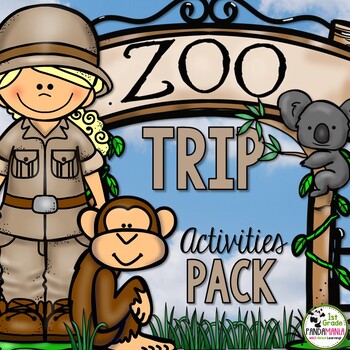Zoo Field Trip Activity Pack
- PDF
What educators are saying
Description
Created with the help of a REAL Zookeeper!
You are set with activities before, during and after your zoo visit with this 145 page activity pack. Prepare with Animal Fact Cards as well as animal classification, diet, and habitat activities. Inspire your students with the Build a Zoo activity. Use the Zoo Masks for a fun and interactive craft. On zoo day, use the Zoo Field Trip Booklets and Signs to organize your students into groups while making the visit engaging and fun for everyone with scavenger hunts. After your trip, construct a Zoo Memory Book with room for a photograph to remember the day.
Included:
♥ Where to at the Zoo?
♥ Habitat Match
♥ Food at the Zoo
♥ Animal Classifications
♥ Build a Zoo
♥ Jr. Zookeeper Flip Book
♥ My Animal Flip Activity
♥ Animal Fact Cards
♥ Coloring Sheets
♥ Zoo Bingo
♥ Zoo Field Trip Booklets and Signs
♥ Zoo Animal Masks
♥ Zoo Trip Memory Book
♥ Zoo Animal Report Planner
♥ Zoo Animal Reports
You may also like:
Endangered Animals Information Posters and Trading Cards
See the preview for more details!
Don't forget to leave feedback and follow my store to be the first to know about sales and new products!
Check out our store with more great products!
Connect with me!
1st Grade Pandamania Facebook Page
***************************************************************************
Customer Tips:
How to get TPT credit to use on future purchases:
• Please go to your My Purchases page (you may need to login). Beside each purchase you'll see a Provide Feedback button. Simply click it and you will be taken to a page where you can give a quick rating and leave a short comment for the product. Each time you give feedback, TPT gives you feedback credits that you use to lower the cost of your future purchases. I value your feedback greatly as it helps me determine which products are most valuable for your classroom so I can create more for you. ☺
Be the first to know about my new discounts, freebies and product launches:
• Look for the green star next to my store logo and click it to become a follower. Voila! You will now receive email updates about this store. ☺
***************************************************************************





